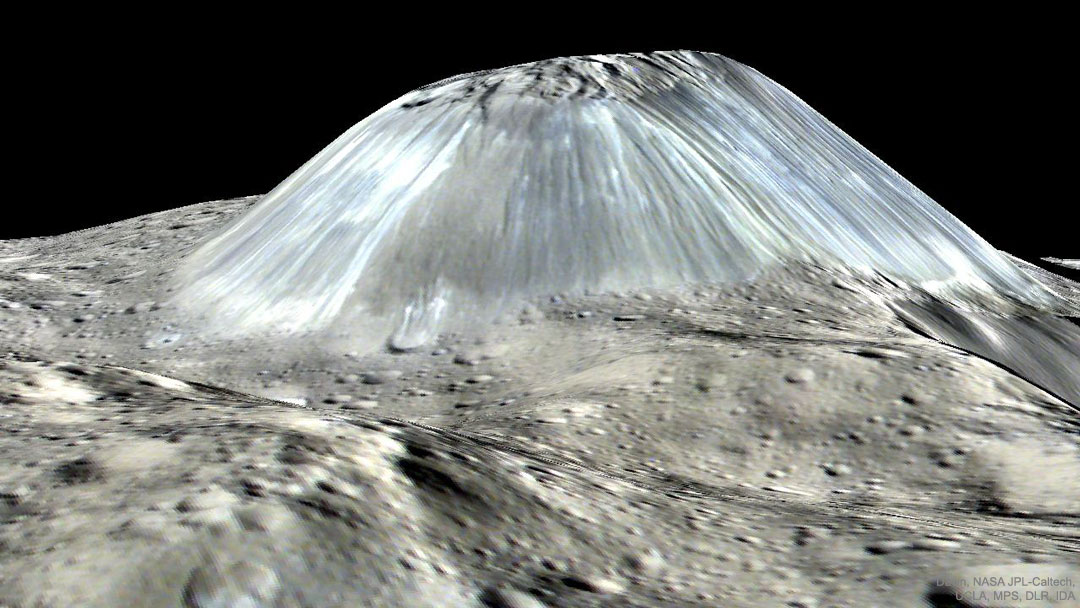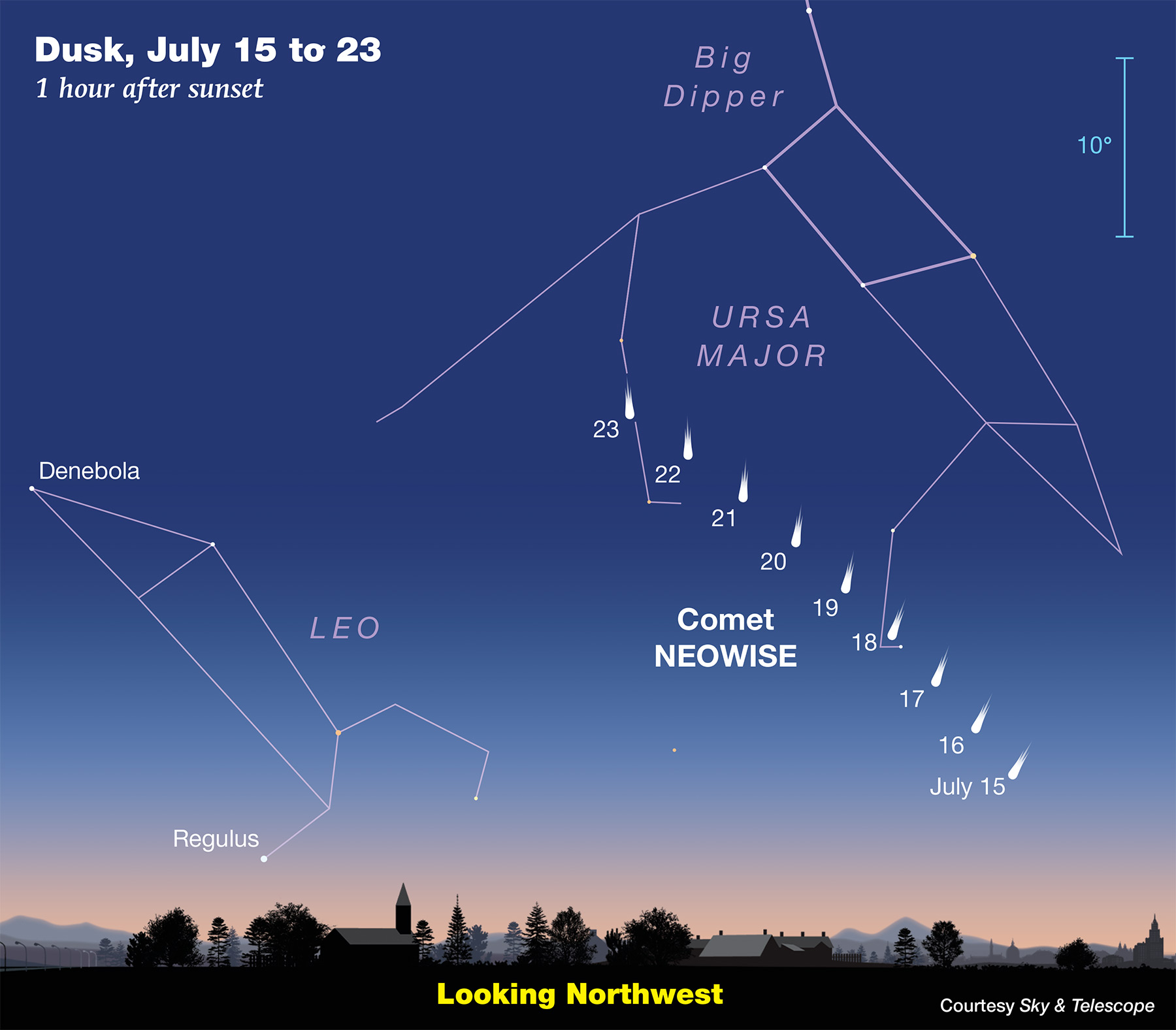My topic for discussion this week will attempt to answer the question:
Why do astronomers believe that the debris that creates many isolated meteors comes from asteroids, whereas the debris that creates meteor showers is related to comets?
But first, I want to share two things that serendipitously fell from my Twitter feed (@mossjon) today. Today’s APOD (Astronomy Picture of the Day @apod) featured the unusual mountain on Ceres (Comins, 2015, p. 239).
 What created this unusual mountain? Ahuna Mons is the largest mountain on the largest known asteroid in our Solar System, Ceres, which orbits our Sun in the main asteroid belt between Mars and Jupiter. Ahuna Mons, though, is like nothing that humanity has ever seen before. For one thing, its slopes are garnished not with old craters but young vertical streaks. One hypothesis holds that Ahuna Mons is an ice volcano that formed shortly after a large impact on the opposite side of the dwarf planet loosened up the terrain through focused seismic waves. The bright streaks may be high in reflective salt, and therefore similar to other recently surfaced material such as visible in Ceres’ famous bright spots. The featured double-height digital image was constructed from surface maps taken of Ceres last year by the robotic Dawn mission. (“APOD: 2017 October 9 – Unusual Mountain Ahuna Mons on Asteroid Ceres,” 2017)
What created this unusual mountain? Ahuna Mons is the largest mountain on the largest known asteroid in our Solar System, Ceres, which orbits our Sun in the main asteroid belt between Mars and Jupiter. Ahuna Mons, though, is like nothing that humanity has ever seen before. For one thing, its slopes are garnished not with old craters but young vertical streaks. One hypothesis holds that Ahuna Mons is an ice volcano that formed shortly after a large impact on the opposite side of the dwarf planet loosened up the terrain through focused seismic waves. The bright streaks may be high in reflective salt, and therefore similar to other recently surfaced material such as visible in Ceres’ famous bright spots. The featured double-height digital image was constructed from surface maps taken of Ceres last year by the robotic Dawn mission. (“APOD: 2017 October 9 – Unusual Mountain Ahuna Mons on Asteroid Ceres,” 2017)
The second thing that immediately caught my eye today was an episode of Astronomy Magazine‘s “The Real Reality Show” entitled “How an Asteroid Killed Off the Dinosaurs” covered late in Chapter 8 of our textbook (Comins, 2015, p. 263-4) and which also bonked me on the head via my Twitter feed:
[youtube https://www.youtube.com/watch?v=_6WAu0mtZRk?rel=0]
(“Real Reality Show: How an Asteroid Killed Off the Dinosaurs | Astronomy.com,” 2015)
But enough from our sponsors. On with the real show and convincing Chicken Little that the sky is indeed not falling.
Continue reading “No, Chicken Little, the Sky is Not Falling”








